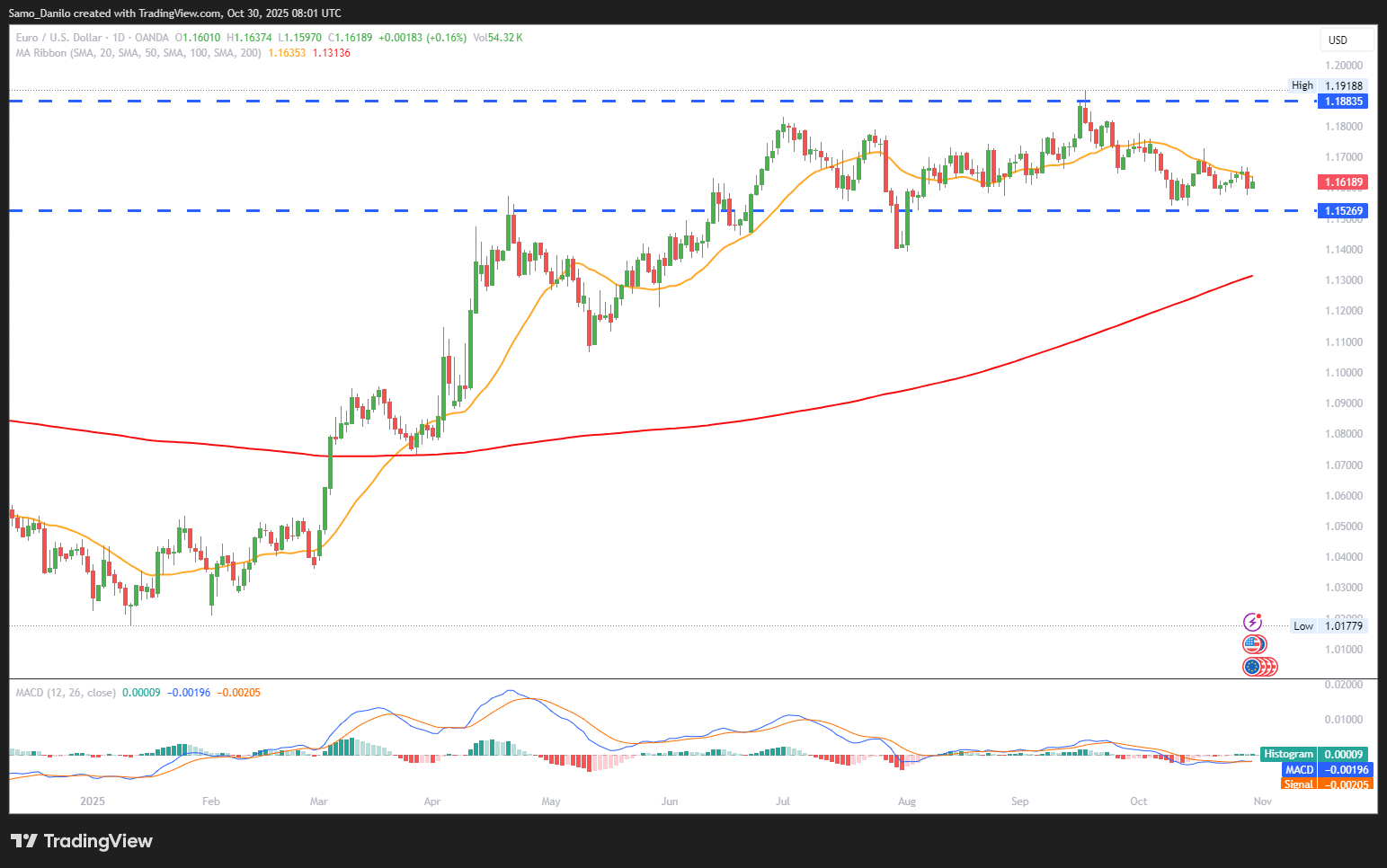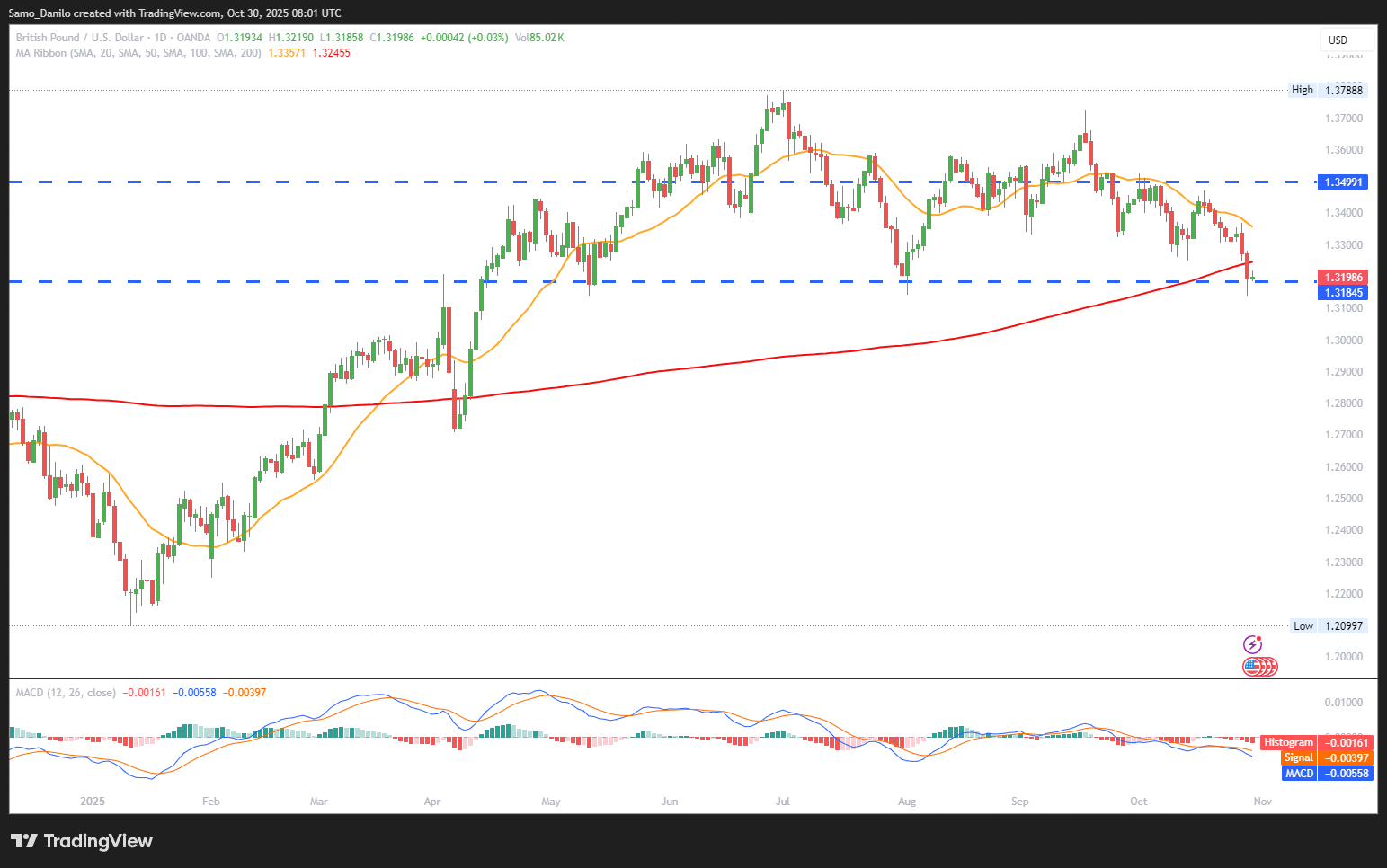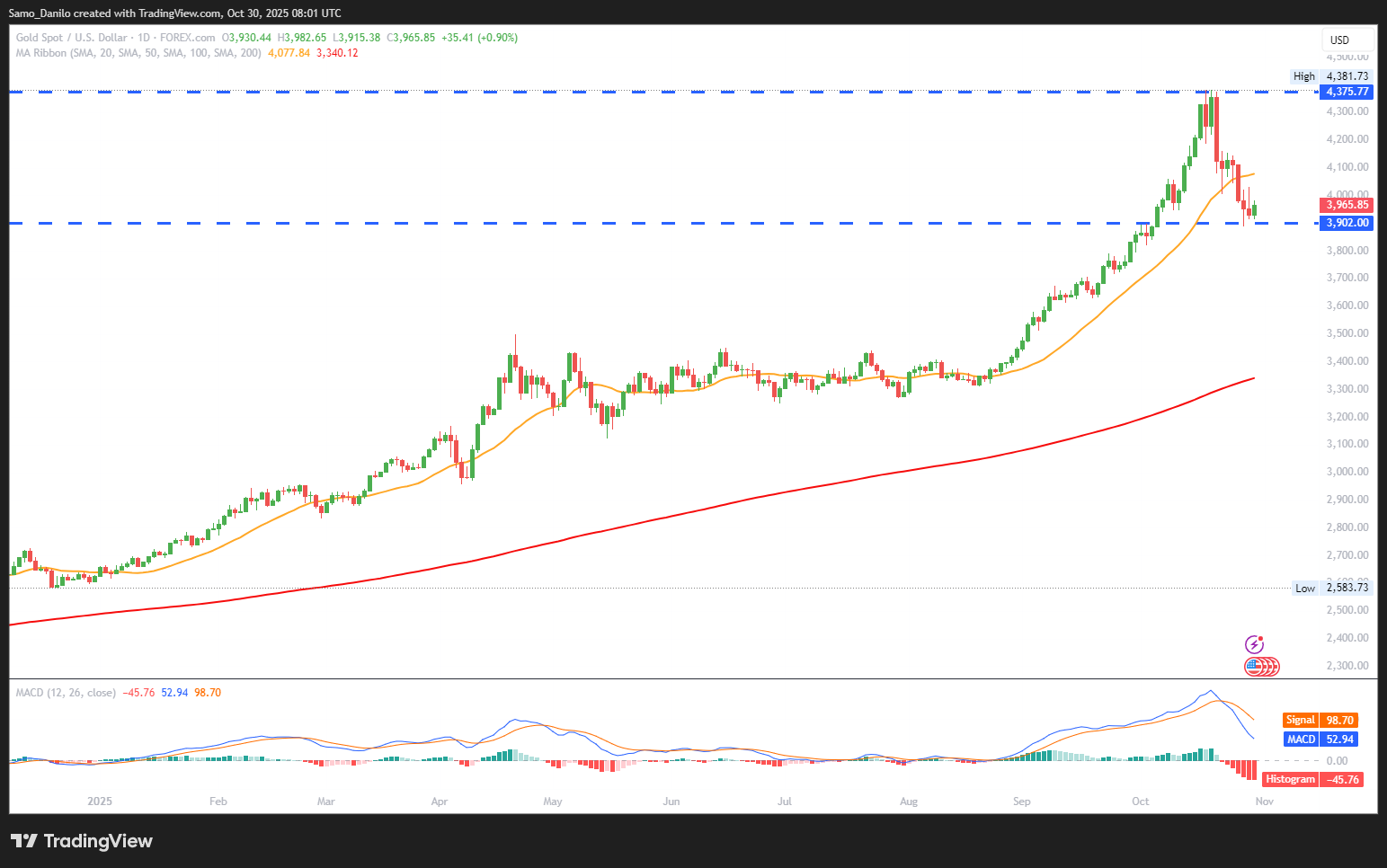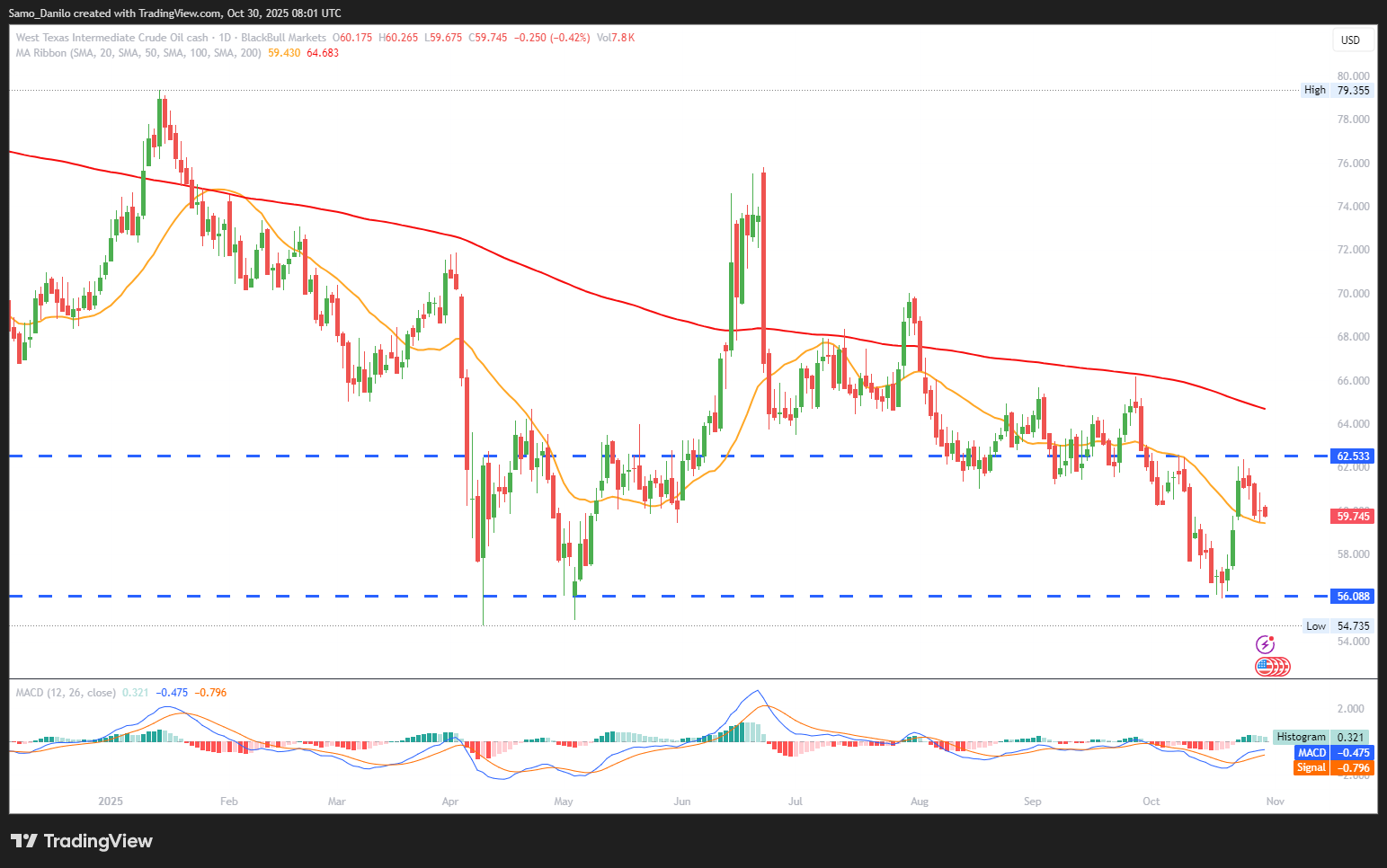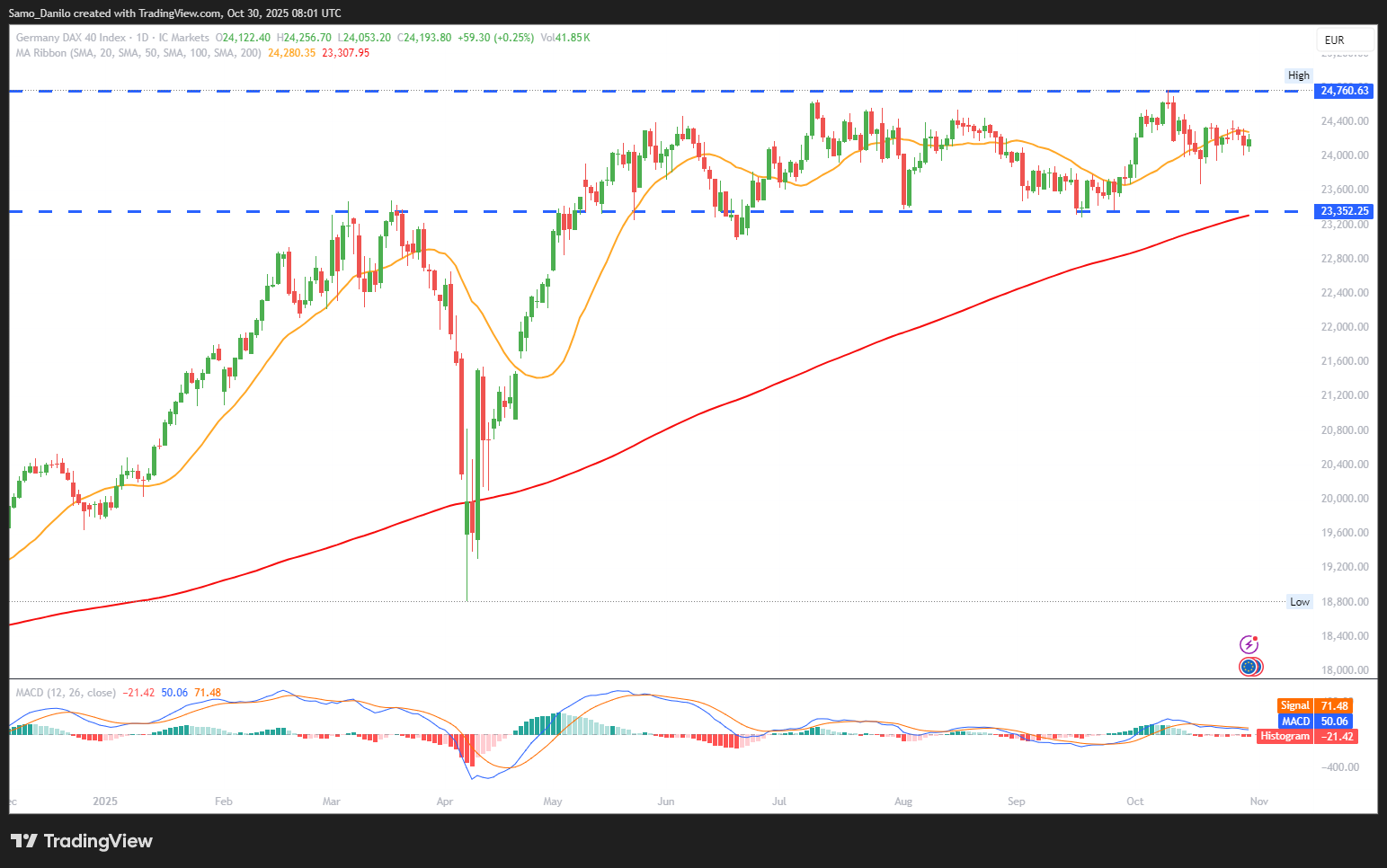EURUSD
- EUR/USD Price: The EUR/USD trades firmly around 1.1620 in early European hours on Thursday, supported by a weaker US Dollar following the Fed’s latest rate move. Market participants are positioning cautiously ahead of today’s ECB policy announcement.
- ECB Rate: The European Central Bank is widely expected to maintain its Deposit Facility rate at 2%, reflecting confidence that Eurozone inflation remains close to target. Policymakers are expected to maintain a neutral tone, emphasizing data dependence and moderate economic recovery.
- Fed Cut: On Wednesday, the Federal Reserve lowered its benchmark rate to 3.75%-4.00%, describing the move as a precautionary adjustment. Fed officials signaled no immediate plans for further cuts, which initially supported the USD but failed to sustain momentum overnight.
- French Politics: The French Socialist Party continues to pressure Prime Minister Sebastien Lecornu’s government to include a wealth tax in the upcoming budget. Failure to do so could lead to a government collapse, introducing fresh political risk to the Eurozone outlook.
- Data Ahead: Investors now await Germany’s and the Eurozone’s Q3 GDP reports, which are expected to offer critical insights into the region’s growth trajectory ahead of the ECB’s policy press conference.
Closing statement: The EUR/USD remains supported near 1.1620, with traders balancing between a steady ECB stance and recent Fed dovishness. Economic data and Lagarde’s tone in the post-meeting remarks will determine whether the pair sustains momentum or faces renewed selling pressure.
GBPUSD
- GBP/USD Price: The GBP/USD extends its recovery from the 1.3140 support, the lowest level since May, gaining traction during Thursday’s European session. The pair benefits from broad-based USD weakness amid ongoing concerns over the prolonged US government shutdown.
- Fiscal Outlook: According to reports, the Office for Budget Responsibility (OBR) plans to cut UK productivity forecasts by 0.3%, potentially widening the fiscal gap by over £20 billion. This revision adds to fiscal headwinds and underscores challenges for Chancellor Hunt ahead of the Autumn Budget.
- BoE Cut: Traders now assign a 68% probability that the Bank of England will lower rates by 25 bps in December, as softening inflation and fiscal risks offer more policy flexibility. This shift reflects expectations of a gradual easing cycle extending into early 2026.
- Government Shutdown: Persistent US political gridlock continues to erode confidence in the world’s largest economy. Investors fear the shutdown could dampen Q4 growth, prompting modest demand for risk assets and supporting GBP/USD in the near term.
- Trump–Xi Meeting: Traders remain attentive to the upcoming US–China talks in South Korea, where both leaders are expected to discuss a potential trade framework. Any progress could influence global risk sentiment and indirectly shape GBP/USD dynamics.
Closing statement: The GBP/USD trades with a positive bias above 1.32, supported by USD softness and expectations of BoE policy easing. However, weaker UK fiscal projections and political uncertainties could limit upside potential in the short term.
XAUUSD
- XAU/USD Price: XAU/USD finds modest support in early European trading on Thursday, hovering just below $4000 as investors capitalize on recent dips. The metal appears to have ended its four-day losing streak, aided by safe-haven flows amid political and policy uncertainty in the US.
- Fed Plan: The Federal Reserve announced plans to end balance sheet reduction by December, signaling a shift toward a more accommodative stance. However, Chair Jerome Powell pushed back against expectations of another rate cut this year, keeping gold’s gains capped.
- Market Expectations: Futures data show only a 33% probability of another Fed rate cut on December 10, with markets now expecting the next policy move to come in early 2026. The reduced odds have limited gold’s upside momentum in the near term.
- Government Shutdown: The shutdown entered its fourth week, reflecting persistent gridlock in Congress over budget approval. The economic uncertainty surrounding this impasse continues to underpin gold’s safe-haven appeal.
- US–China Trade: Following the meeting between Presidents Xi Jinping and Donald Trump in South Korea, China’s Commerce Ministry confirmed progress on fentanyl-related issues and rare earth export controls. This eases trade tensions, offering mild support to market risk appetite.
Closing statement: Gold holds just below $4000 as mixed Fed signals and US political risks balance improving US–China relations. While the end of quantitative tightening lends a medium-term bullish undertone, delayed rate-cut expectations may restrain near-term upside momentum.
CRUDE OIL
- Crude Oil Price: West Texas Intermediate (WTI) crude slips to $59.75 per barrel on Thursday, down from Wednesday’s close at $60.21. The decline reflects persistent supply-side uncertainty and limited risk appetite, keeping prices under pressure ahead of key OPEC+ developments.
- US Sanctions: The new US sanctions on Russia’s Rosneft have reignited internal discussions in Berlin over potential nationalization of its German operations. The US Treasury granted a sanctions exemption for Rosneft’s German subsidiary until April 2026, providing temporary relief for regional fuel supplies.
- Energy Security: According to Reuters, German officials are considering asset seizures or sales to foreign investors as longer-term measures to safeguard domestic energy stability. The uncertainty surrounding this decision adds volatility to European energy markets.
- OPEC+ Output: Eight OPEC+ members have collectively raised production targets by 2.7 million barrels per day (bpd) over recent months, offsetting less than half of the 5.85 million bpd cuts from prior years. The measured pace of supply restoration suggests the group remains cautious about oversupplying the market.
- Kuwait Oil: A senior Kuwait Oil Company executive confirmed plans to invest $3.9 billion in exploration drilling by 2030, reinforcing the Gulf state’s long-term production growth strategy within OPEC. The move highlights continued confidence in future oil demand, despite current market weakness.
Closing statement: WTI prices remain subdued near $59.75, pressured by geopolitical uncertainty and gradual OPEC+ output recovery. While sanctions-driven supply disruptions offer short-term support, expanding Gulf production and German policy indecision suggest that crude could remain range-bound in the near term.
DAX
- DAX Price: Germany’s leading index, the DAX, trades 0.3% higher around 24,200 points, reflecting cautious optimism as investors digest fresh corporate earnings and geopolitical developments.
- US–China Agreement: US President Donald Trump and Chinese President Xi Jinping reached a one-year agreement to ease export controls on rare earths. In return, Trump pledged to cut fentanyl-related tariffs by 10 percentage points, providing a temporary boost to global trade sentiment that lifted equities, including the DAX.
- Fiscal Outlook: Experts have warned that Germany’s July 2025 medium-term fiscal plan relies on overly optimistic GDP and inflation assumptions, with much of the adjustment delayed to later years. This raises doubts about fiscal sustainability and could constrain public investment amid slower economic growth.
- Regional CPI: German states are set to release October CPI data, expected to show a slight moderation in inflation to 2.2% YoY from 2.4% in September. A softer reading could reinforce expectations for continued ECB policy stability and offer mild relief to equity markets.
- Events Ahead: Investors are closely monitoring a wave of quarterly results from major German firms, which could sway sector-specific sentiment. The European Central Bank meeting later today adds another layer of caution as traders position for clues on policy direction.
Closing statement: The DAX holds near 24,200 points, supported by improved US–China trade relations but capped by domestic fiscal concerns and anticipation of inflation and ECB updates. Short-term momentum remains mildly bullish, though structural economic headwinds could limit upside in the weeks ahead.
